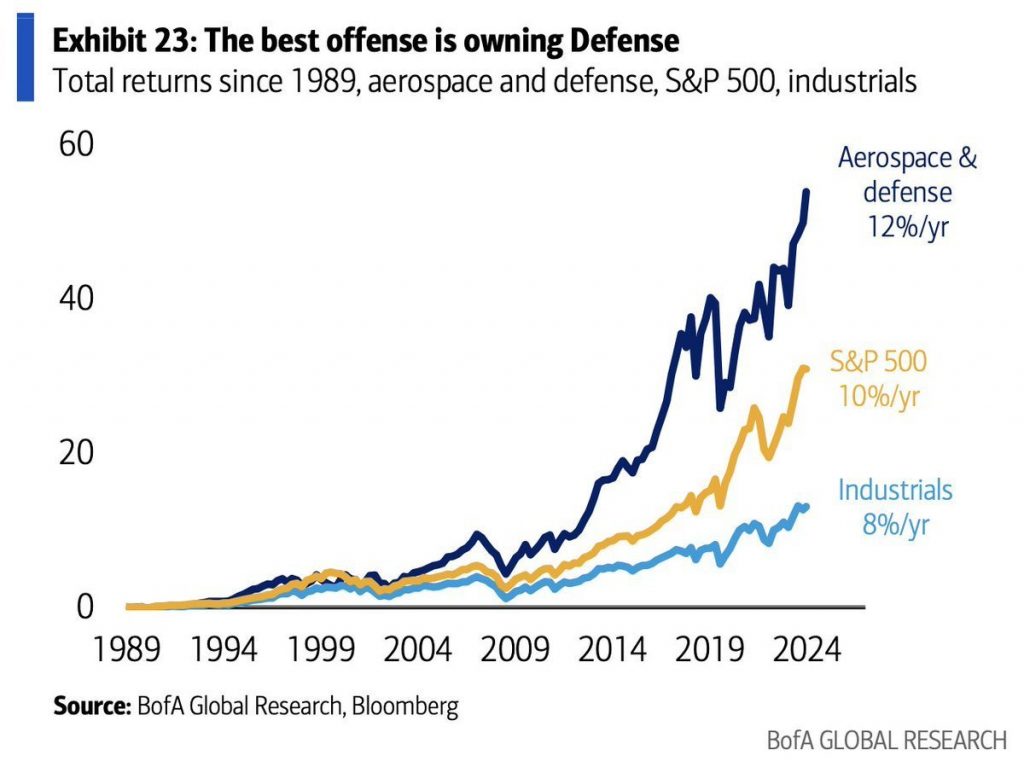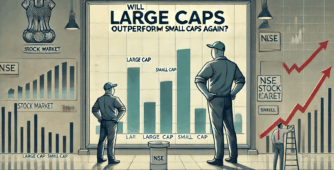Defense: A Strong Performer in the Market
One of the most consistent sectors in the U.S. stock market over the past 35 years has been aerospace and defense. This sector has seen a compound annual growth rate (CAGR) of 12%, outperforming the S&P 500, which itself has yielded a 10% CAGR. Many might assume that industrials would outpace aerospace and defense, but this chart from Bank of America proves otherwise. Despite the ups and downs in the global economy, the defense sector has shown remarkable resilience and growth.

Why Defense Has Outpaced Other Sectors
The U.S. economy has a strong connection to the defense industry. War and military spending have often acted as catalysts for economic activity. The U.S. defense industry doesn’t just thrive during times of conflict; it is also driven by the ongoing need to maintain and upgrade military capabilities. This constant demand helps the industry maintain its growth, making it one of the most robust sectors over the long term. While other industries may rise and fall with economic cycles, the defense sector remains a steady performer.
India’s Growing Role in Defense Manufacturing
India is beginning to emerge as a significant player in the global defense industry. With rapid advancements in defense manufacturing, India could soon become a hub for defense exports, particularly to neighboring countries. As global supply chains shift and countries seek to reduce their dependence on Western imports, India’s defense sector has the potential to grow significantly. The next decade could see India establishing a strong defense industrial complex, much like what the U.S. has today.
Some people believe that defense is just a temporary trend, but history suggests otherwise. Once an industry reaches a critical mass, it often continues to grow. The defense sector, with its consistent demand and strong government backing, could very well be one of the best-performing industries in the coming years. Writing off a sector like defense could mean missing out on significant long-term gains.
Problem with Forecasting
One of the biggest challenges in investing is the temptation to forecast the future. While it’s natural to want to predict which sectors will perform well, the reality is that forecasts often go wrong. When predictions don’t pan out, investors not only lose capital but also valuable time and opportunities. Trying to make up for these losses can lead to further setbacks. Instead of relying on forecasts, a better approach is to follow the market’s signals.
Mi EverGreen’s Subscription Fee goes up on 10 Sep 2024
Effective 10 Sept 2024 , Mi EverGreen’s subscription fee will be increased for the first time since launch.
Old Pricing : Rs 2,499 (Quarterly) | Rs 7,499 (Annual)
New Pricing : Rs 4,999 (Quarterly) | Rs 14,999 (Annual)
For Current Subscribers of Mi Evergreen
Nothing changes for current subscribers at all. You shall continue to enjoy access to the strategy at your current subscription fee as long as you do not break your subscription loop. Kindly ensure that you keep your auto renew ON and renew your subscription on time.
For those who haven’t subscribed yet
This is a great opportunity to subscribe to Mi Evergreen at its current pricing. Use the link given below to subscribe
Disclaimers and disclosures : https://tinyurl.com/2763eyaz
If you have any questions, please write to support@weekendinvesting.com













